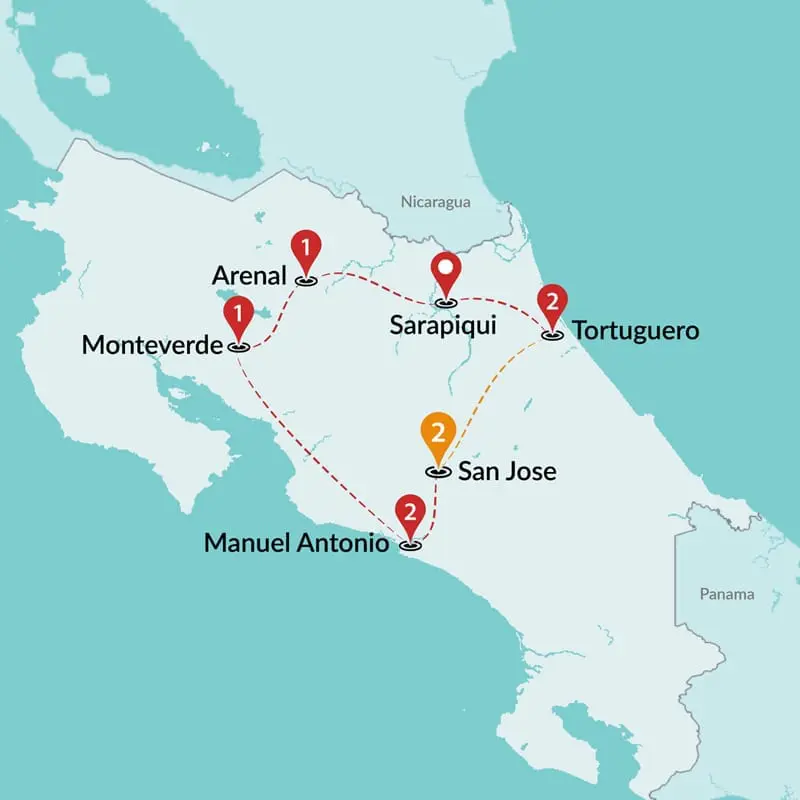Eating & Drinking
“Delightfully austere and casually rich in content, Costa Rican food has a fresh feeling to it that will rejuvenate your senses unlike anything else.”
In the extremely plentiful, spicy, and complex food scene of Central America, Costa Rica somehow eludes from the picture with its mild cuisine. Dishes are mostly dependent on fresh vegetables and fruits, with rice and black beans as staple ingredients. In urban centers like San Jose, you will find playful international touches to the local cuisine in experimental restaurants. Peruvian, Italian, and Chinese influences are common and popular. Local ingredients like maize and corn are from the pre-colonization times, common in indigenous recipes. And Tamales, as in many other Latin American countries, are iconic festive food. While on the Caribbean Coast, Afro-Caribbean culinary traditions dominate the scene, with fish and pork accompanying the iconic rice and beans, especially during the holidays.
A typical dinner in Costa Rica consists of a combination of multiple local dishes served on one plate. Casado is a famous example, reflecting the generous nature of Costa Rican culture to the bone. Rice, beans, and meat on the one side, and salad, fried platano bananas, and tortilla on the other: the balance of tastes is the best part of the national dish of Costa Rica. As for breakfast, there is no dish more traditional than Gallo Pinto, blending Costa Rican and Nicaraguan tastes in a harmonious marriage. Arroz con Leche is the national dessert, made in the country for centuries. The lemon zest and cinnamon sticks are part of local variations.
Apart from the most common dishes, there are iconic elements that you will only find in Costa Rica. Ticos love their sauces. Salsa Lizano, a quintessential Costa Rican condiment, is almost a culinary symbol of Costa Rican culture. And there is the refreshing agua dulce, raw cane sugar juice coming from the higher elevations to the sun-kissed coast.


 January Sale; 2 For 1
January Sale; 2 For 1  Croatia Sailing : 2 For 1
Croatia Sailing : 2 For 1 Asia Tours : 2 For 1
Asia Tours : 2 For 1 Central & Eastern Europe Tours: 2 For 1
Central & Eastern Europe Tours: 2 For 1  Why Travel Talk
Why Travel Talk Travel Talk Blog
Travel Talk Blog Responsible Travel
Responsible Travel Fair Travels with Travel Talk
Fair Travels with Travel Talk







